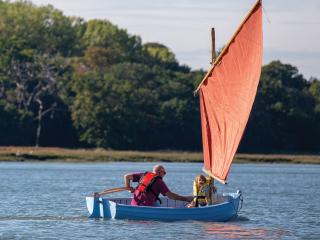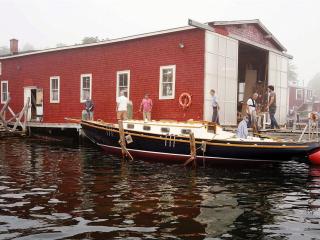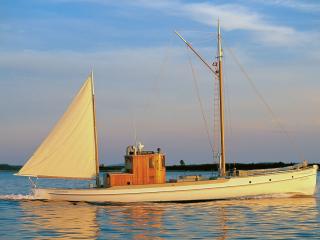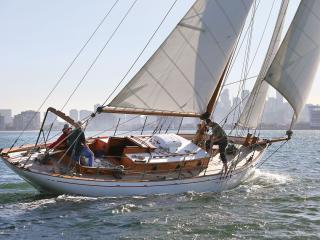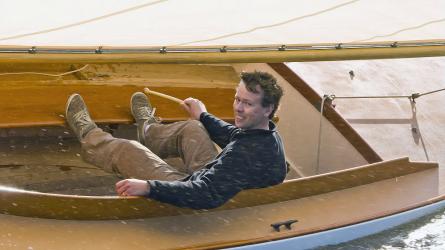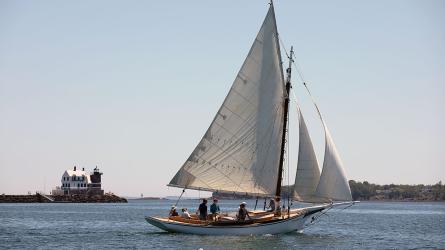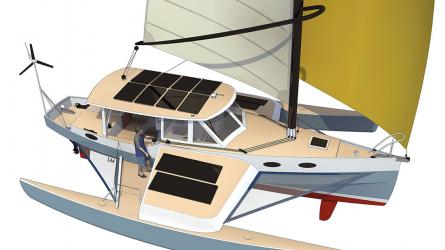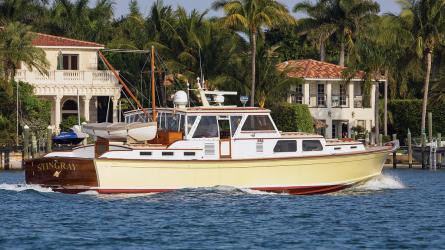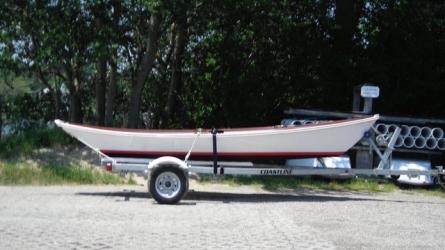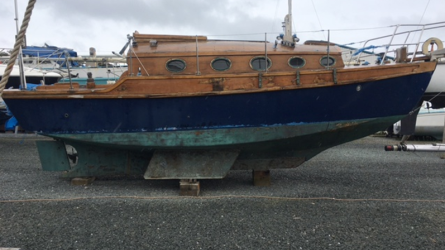July / August 2019
The Pacific Class Sloop
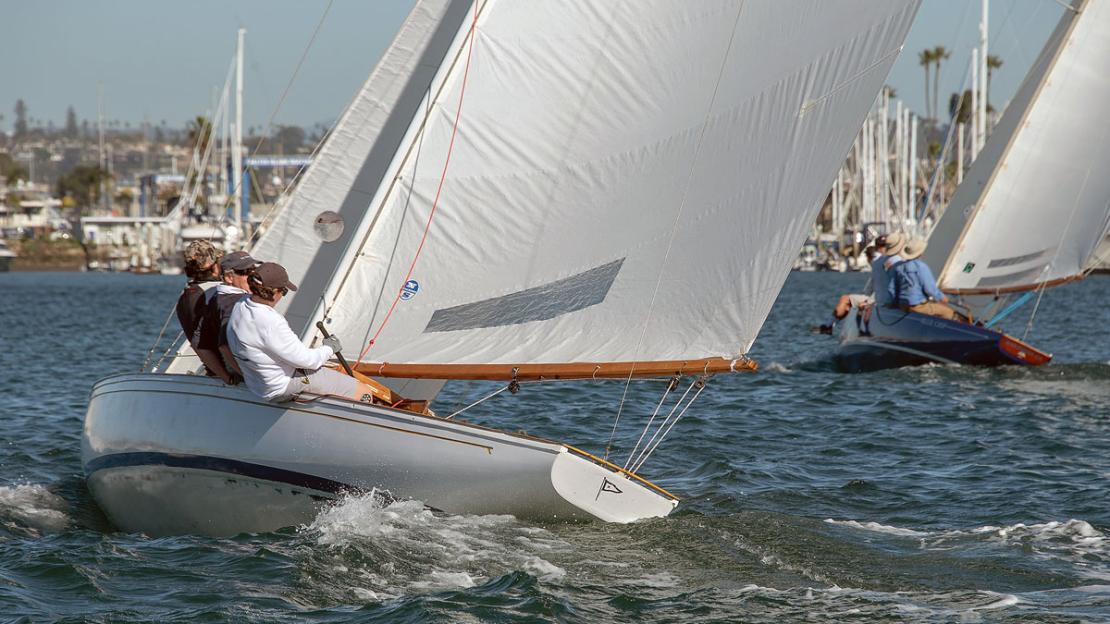
The crew on ROUTE 66 hikes hard during the final charge to the finish line of the first 2019 Sun Series Race. To leeward of them is BLUE CHIP (No. 43), also recently restored by her owner, Chris Frost. BLUE CHIP was owned by the PC Class’s designer, Paul Kettenburg, and Frost sailed on her as a teenager. Many PCs have been handed down to owners who are willing and able to oversee restorations.
Legend has it that on the storied waters off San Diego, California, where Dennis Conner defended the AMERICA’s Cup not so long ago, there has been an unusual gathering of what some in nautical circles call “angels.”
Those angels have built, sailed, and nurtured a class of large and sleek knockabout sloops known affectionately as “PCs.” The Pacific Class was the first one-design racing sloop constructed for Southern California waters, and over the past 90 years this class of about 80 boats has sailed into yachting mythology. WINGS, hull No. 8 and perhaps the oldest hull in existence, is on display at the San Diego Maritime Museum.
PCs have attracted an enthusiastic following for about four generations. Today, 18 of them line up in their slips on E Dock at the San Diego Yacht Club (SDYC) like a concours d’élégance of trophy boats, and another dozen lie at various locations around San Diego. On weekends they raise their sails for jaunts or races around San Diego Bay. When first built in 1929, the PC sloop was conceived as a club and class racer within the price range of sailors of ordinary means who could maintain their own boats. But today a restored PC can cost you well over $50,000, which is no modest outlay for a daysailer.
I asked Rish Pavelec, who has rescued quite a few PCs, what the boat’s big attraction is. He paused, then his voice began to almost purr as he spoke. He said the PC looks just like the sailboat you see in your dreams. “It looks the way a sailboat should look.”
Dr. Alex Caldwell, who grew up sailing and racing PCs with his parents, is a glider plane enthusiast. He says that sailing his late father, Bud’s, Pacific Class ONION TRUCK is as close as you can come on the water to piloting a glider. “It’s like soaring.”
After hearing such testimonials, I thought I owed it to myself to go in search of the magic. So it was on a windy March afternoon in San Diego that I found myself in the cockpit of PC No. 16, DAWN, built in 1934 and recently restored. Our crew of four included three sailors who are among the current angels shepherding the PC toward its centennial. Aboard and calling the shots was DAWN’s restorer, the Pied Piper of San Diego’s wooden boat renaissance, C.F. Koehler. He’s a 54-year-old wooden boat guru, president of the family Koehler Kraft yacht yard, professional skipper, and inspired jazz trumpeter. Amanda Del Bello and Danielle Richards, two of the “young bloods” in the PC fleet, were tending the jib.
DAWN has no engine, and freeing her from her berth deep amid a warren of docks and boat slips seemed to me like an accident waiting to happen. So I was not all that excited to take the helm. But as soon as we shoved off the dock and Koehler began hoisting the mainsail, I felt DAWN’s helm come alive in my hand. She pivoted through the twists, turns, and narrow fairways like a smart, little junior racer a third her size.
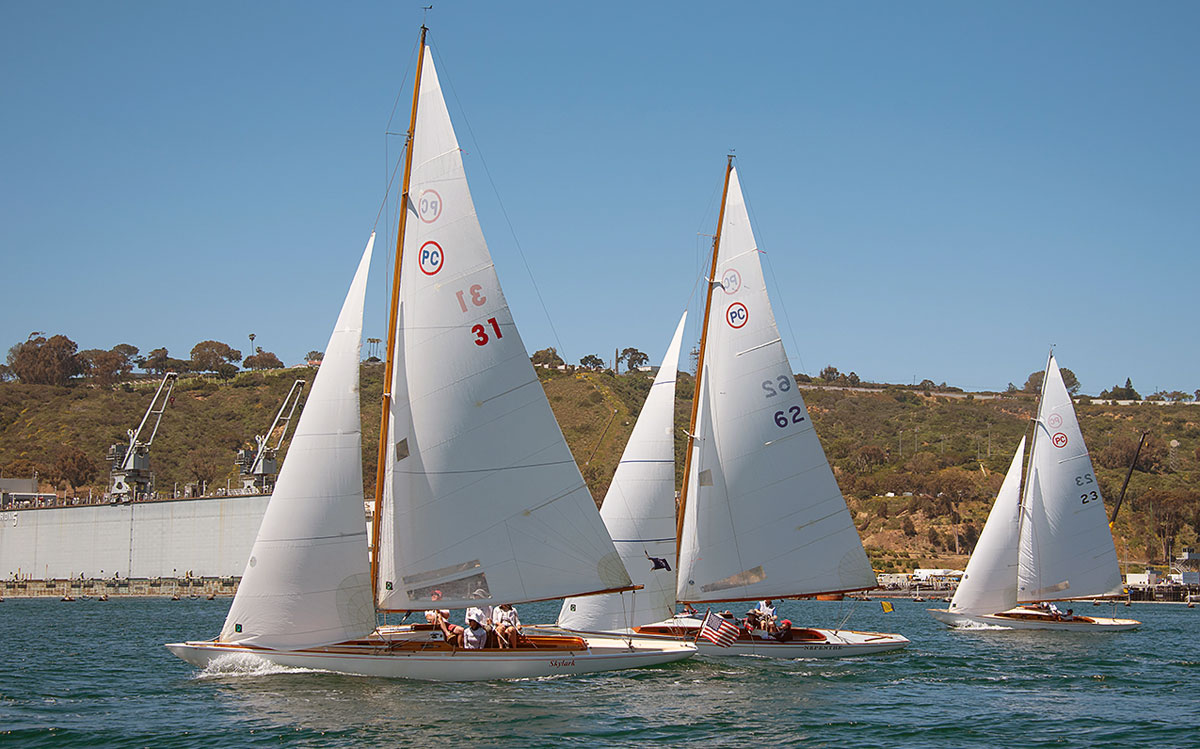
SKYLARK (No. 31) was skippered by Commodore Jerelyn Biehl in the 2019 San Diego Yacht Club (SDYC) Opening Day race. The boat had a doghouse, which was removed to enlarge the cockpit. NEPENTHE (No. 62) and ROUTE 66 (No. 66, though the sail says 23) are in the background.
In the open waters of San Diego Bay, she really showed her nimbleness as she slalomed amid the Saturday afternoon boaters motoring about in swarms. Folks on other boats cheered as we scooted by them with the crisp, modern-yet-traditional Oceanus sails set wing-and-wing. Heading upwind in puffy conditions, DAWN tacked with surety and swiftness, then heeled into the gusts and took off like a thoroughbred. She skimmed over powerboat wakes like they weren’t even there. No question, I felt the truth of what Caldwell had told me. Reaching and off the wind, sailing a PC was like soaring. Going to windward in DAWN had all the thrill of driving a classic roadster on a twisty highway.
To read the rest of this article:
Click the button below to log into your Digital Issue Access account.
No digital access? Subscribe or upgrade to a WoodenBoat Digital Subscription and finish reading this article as well as every article we have published for the past 50+ years.
ACCESS TO EXPERIENCE
2-for-1 Print & Digital Subscription Offer
For this holiday season, WoodenBoat is offering our best buy one, get one deal ever. Subscribe with a print & digital subscription for $42.95, and we’ll give you a FREE GIFT SUBSCRIPTION to share with someone special.
1 YEAR SUBSCRIPTION (6 ISSUES)
PLUS ACCESS TO MORE THAN 300 DIGITAL BACK ISSUES
PRINT+DIGITAL $42.95
Subscribe
To read articles from previous issues, you can purchase the issue at The WoodenBoat Store link below.
 Purchase this issue from
Purchase this issue from
